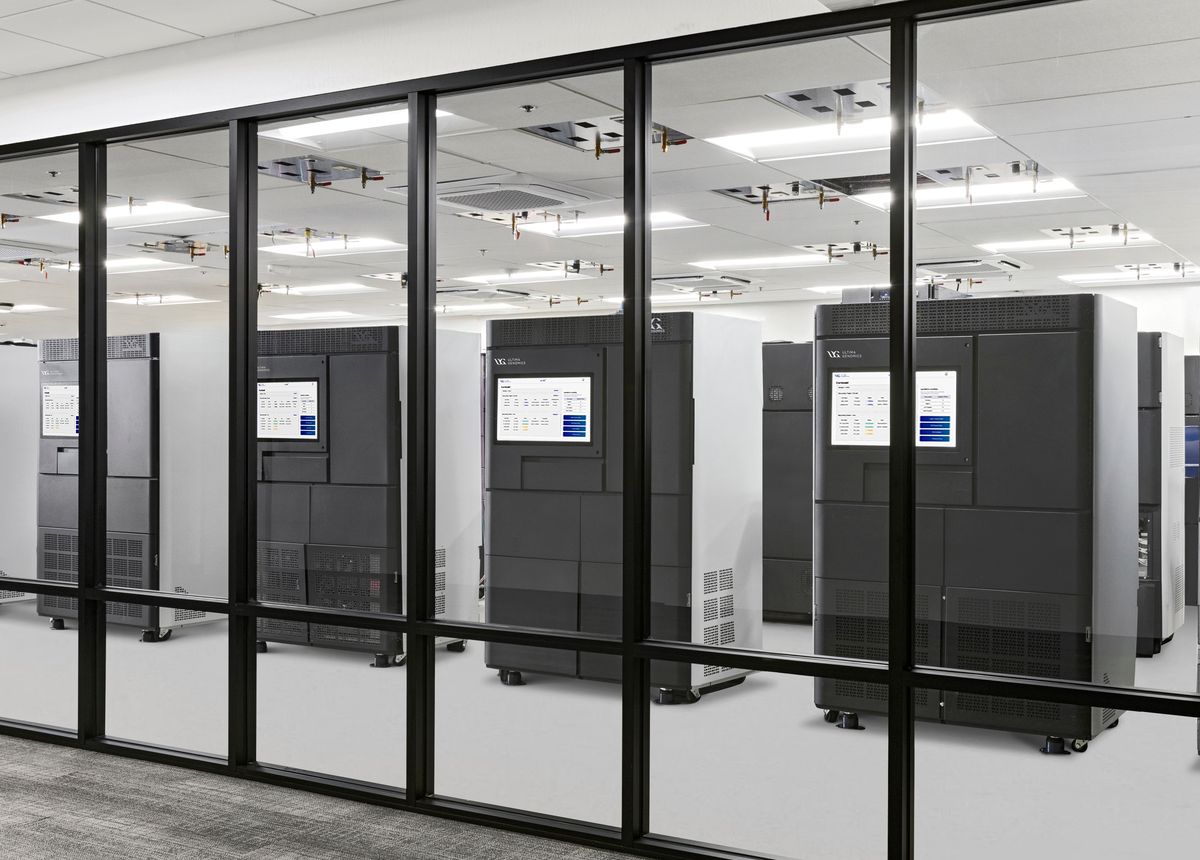
Fully integrated 10x Genomics single cell and spatial transcriptomics workflows with Ultima Genomics UG 100™ Sequencing Platform

Game-changing costs that enable larger single-cell datasets at greater depth
Discover the UG 100 Sequencer| Reads per wafer | Price per million reads* | Cost per cell (20k reads) | Cost per cell (50k reads) | |
|---|---|---|---|---|
| UG 100 Solaris™ | 10 - 12 B | $0.24 | $0.0048 | $0.012 |
| UG 100™ (2024) | 6 - 8 B | $0.30 | $0.0060 | $0.015 |
*Per costs based on list price over 4 wafers, assuming 20,000 reads per cell.

Fully integrated 10x Genomics single cell and spatial transcriptomics workflows with Ultima Genomics UG 100™ Sequencing Platform

Parse GigaLab and the Ultima Genomics UG 100™ Sequencing Platform drive 10 million single-cell cytokine perturbation experiment

Scale's 100 Million Cell Challenge using QuantumScale™ kits from Scale to run on UG 100.

Compatibility of BioSkryb Genomics ResolveDNA® and ResolveOME™ with Ultima Genomics UG 100™ Sequencer
The UG 100 Solaris™ Flex workflow allows for seamless adaptation of partial or full-length existing libraries generated from third-party library kits though a simple PCR.
Explore Solaris library prepView library compatibility guide| Indexing PCR | |
|---|---|
| Adapter names | UG-R1 Indexing and UG-Universal primers |
| Purchase from | Ultima Genomics |
| Sample indexing | 384 sample indices |
| DNA type | Native or existing library |
| DNA input range | 10 ng* |
*DNA input amounts verified by Ultima Genomics.

Fully integrated 10x Genomics single cell and spatial transcriptomics workflows with Ultima Genomics UG 100™ Sequencing Platform

Parse GigaLab and the Ultima Genomics UG 100™ Sequencing Platform drive 10 million single-cell cytokine perturbation experiment

Compatibility of BioSkryb Genomics ResolveDNA® and ResolveOME™ with Ultima Genomics UG 100™ Sequencer
Biology not only needs more data — the field needs more data faster.
Jonah Cool, PhDSenior Science Program Officer | Chan Zuckerberg Initiative

Access cost-effective and scalable sequencing through our growing network of global service providers vetted for technical expertise and adherence to best practices. Submit samples and start generating data on the UG 100 Sequencer now.
Sequence with a CSP todayOur Technology Access Program offers accessible entry to the UG 100™ through our in-house applications lab. Sequence on our high-capacity fleet of UG 100 Sequencers and receive support at every step, from consultation through data analysis.
Discover our TAP offeringsInterested in exploring how your lab can benefit from high-throughput, cost-effective sequencing? Learn how our novel use of open wafers and built-in automation is continuously driving the cost of sequencing down to accelerate omics at scale.
Explore our technology